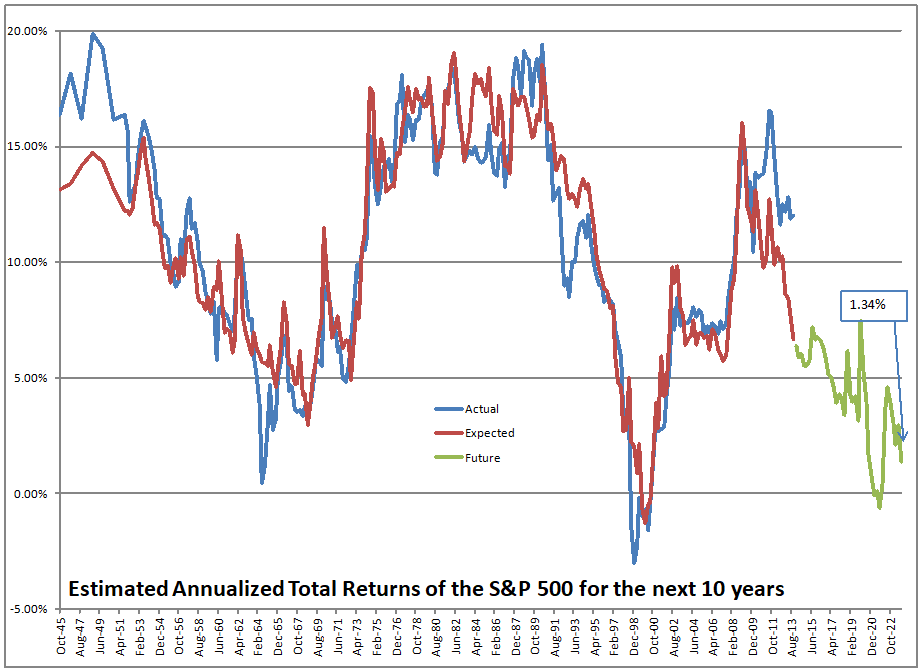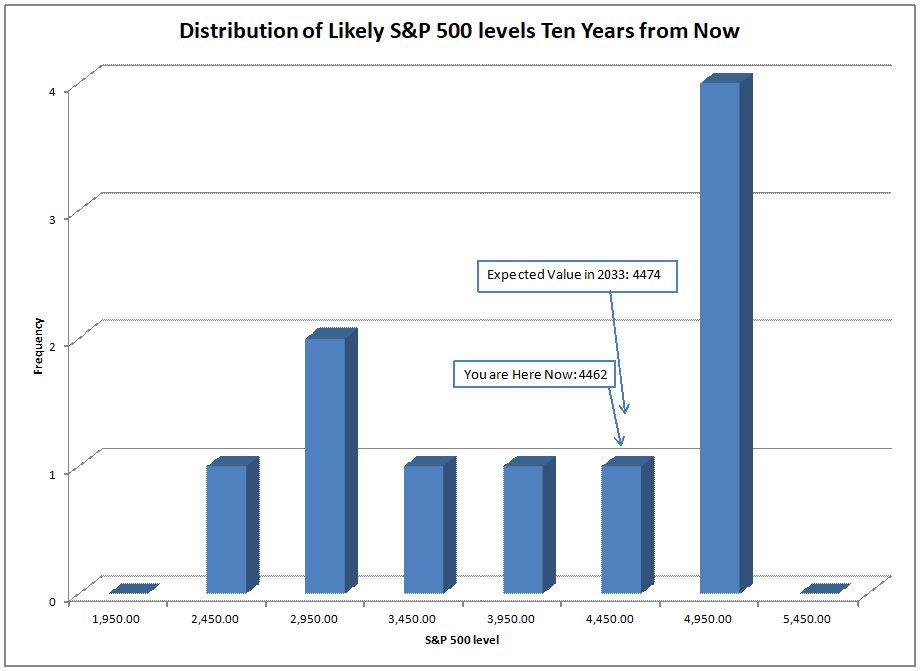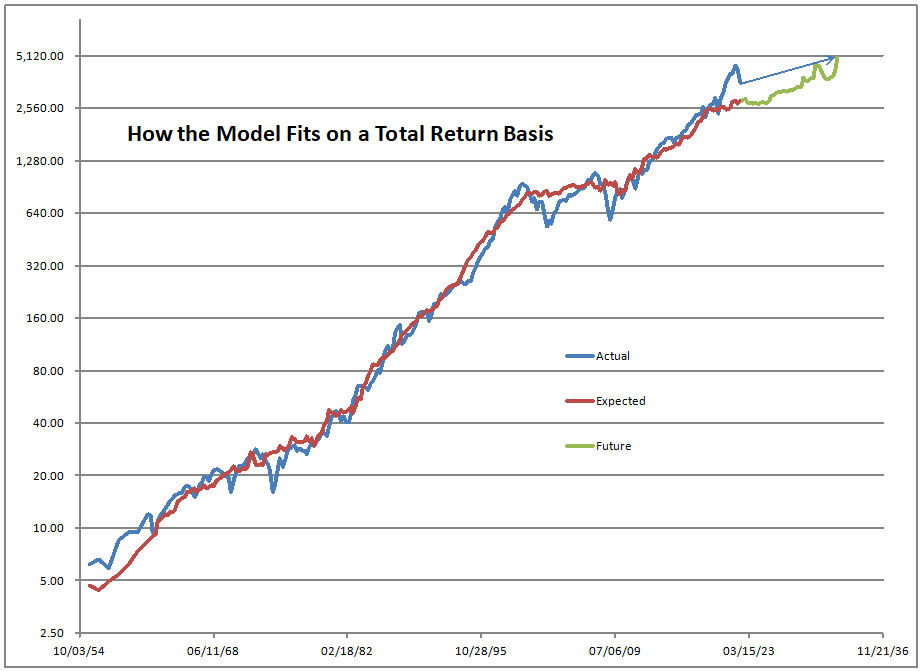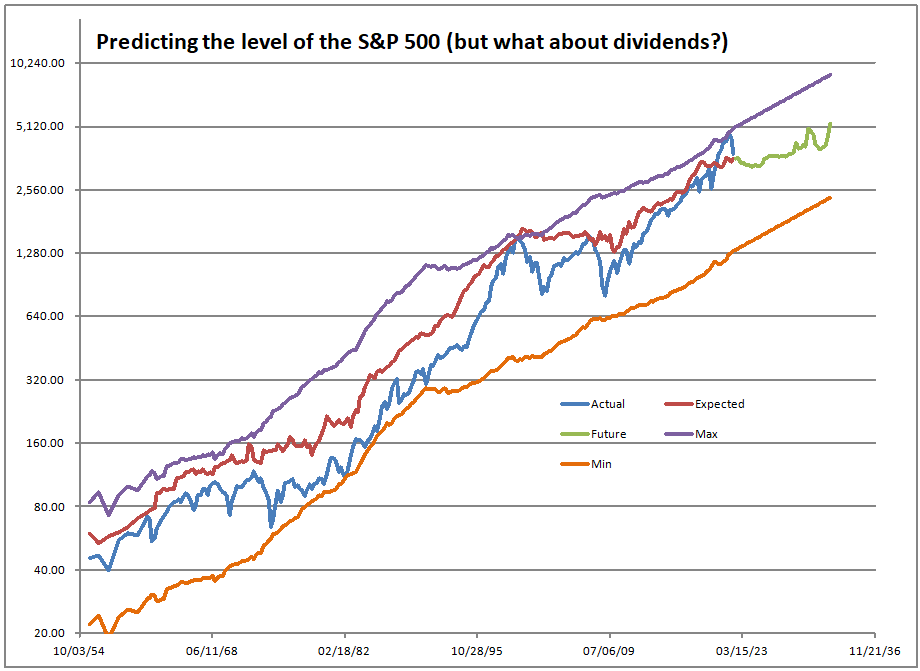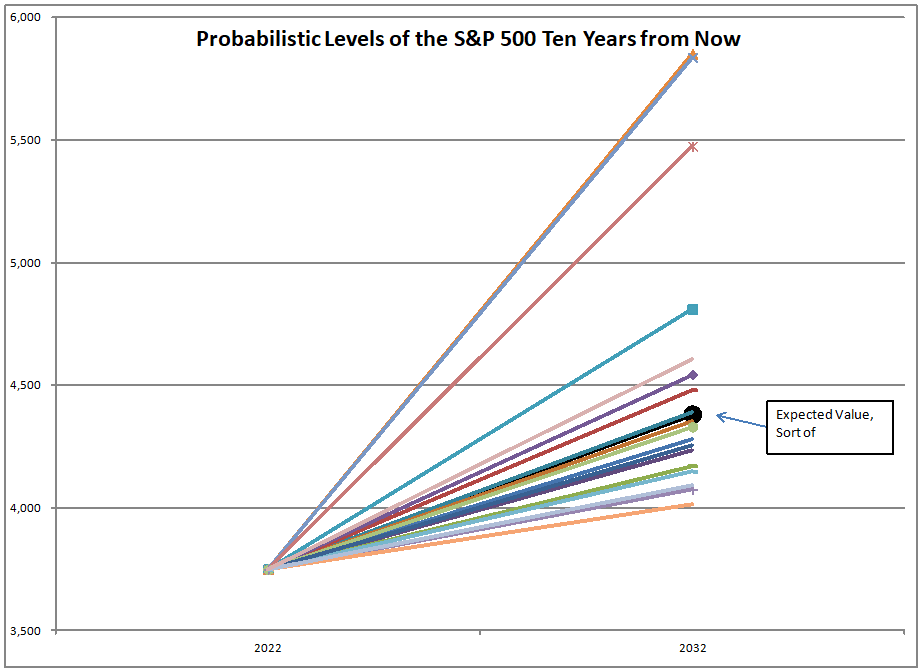Estimating Future Stock Returns, December 2023 Update
Credit: Aleph Blog || Really, we should be expecting a bubble as the Baby Boomers retire.
As of December 31st, 2023, the S&P 500 was forecasting a return of 1.34%/year over the next ten years, with no adjustment for inflation. As of the close on May 10th, 2024, that figure was 0.32%/year.
Why so glum? US entities are overinvested in stocks and private equity. Since 1945, the fraction of total wealth in stocks today is in the 98th percentile. The pension funds of many states are counting on equities to allow them to fulfill their promises. They have the added advantage of higher interest rates to aid them as well, but those rates may fall, because the US Government needs low rates to limit its deficit. The Fed is not independent; it does what the US government wants it to do.
The hidden assumption behind this model is that the return on assets in the US is mostly constant. What if the market is higher because of AI or GLP-1 drugs? Huge innovations, right?
Maybe. It’s unclear what genuine productivity enhancements will come from AI. Will rents, food and energy become cheaper? I doubt it. Negative side effects from GLP-1 drugs after long exposures are not yet realized. Away from that, gains in one industry may be matched by equal losses in another industry.
When we are overinvested in stocks, negative news will have higher impact. There is less slack capital to absorb the troubles.
Now, all that said, value stocks are cheap, and will be affected less by market events. Same for some small and midcap stocks. Lots of good opportunities over the long-haul if you look for them. Just ignore the large cap growth market leaders that are overvalued. They are the reason the market as a whole is overvalued.
So, add to safe assets, and cut back on large cap growth. This feels like June 2000, where everyone was so optimistic, sailing into the teeth of the storm. Get ready, because value and small are back.

